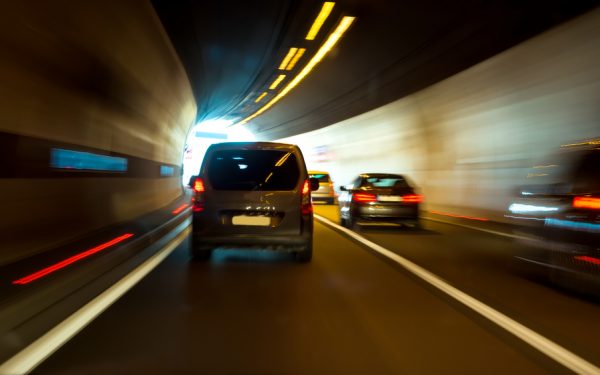Written by Drs. Shane Underwood and Eleni Bardaka
“So you say you want a Revolution”
In 1968, the Beatles sang about changing times and evolving ideals. Now, social scientists are enthralled in similar debates about the future of transportation. This debate has been spurred by the rising interest in the use of connected and autonomous vehicles. Vehicle autonomy is becoming a standard feature as an increasing number of automobiles are equipped with technologies such as lane assistance, adaptive cruise control, and automatic emergency braking. These technologies represent the lowest form of automation, and vehicle manufacturers are developing higher levels of automation that will allow a vehicle to operate without a driver. Such advancements are introducing technical, social, and political questions, and will disrupt how roadways are planned, operated, and perform.
Three projects recently completed, or ongoing, demonstrate how CCEE researchers are creating knowledge that will inform the transportation revolution.
Planning for infrastructure and services based on system impacts
Drs. Eleni Bardaka, Nagui Rouphail, George List, Billy Williams, Chris Frey, and collaborators from Duke University are conducting a study for the North Carolina Department of Transportation (NCDOT) to understand the potential impacts of connected and autonomous vehicles on the capacity of and demand on transportation systems, as well as understand the impacts to the efficiency of freight movement, energy consumption, and emissions.

“There are multiple technological advancements happening simultaneously, including automation, connectivity, electrification, and ride-sharing services. One of the most challenging parts of our work is coming up with realistic scenarios of operation and market penetration for connected and autonomous vehicles.” Eleni Bardaka
The multidisciplinary research team will use North Carolina themed case studies to accomplish its objectives: 1) simulate a freeway with a mixture of traditional, autonomous, and connected personal vehicles and trucks; (2) estimate changes in transportation demand under scenarios of vehicle automation and shared mobility; and (3) analyze household residential choice preferences and willingness to pay for vehicle technology based on a household survey. Though the project focuses on North Carolina, it is expected that the results of the research will be transferable to other states, providing specific guidelines and recommendations on planning for future transportation infrastructure.
Using vehicle connectivity to improve traffic operations in mixed traffic
Dr. George List has recently completed a project in collaboration with researchers at Old Dominion University to understand how advanced vehicle technologies could be leveraged to improve transportation operations. The research team studied how connected vehicle technology could be used to improve traffic flows through tunnels.

“The original impetus was evacuation and concern about the undesirable safety and health consequences when a queue of vehicles exists inside a tunnel. Our working hypothesis is that these queues occur because people are averse to being in a vehicle in a confined environment.” George List
Eliminating the problem might not be possible, but as List explains, “the place where the queue should exist is outside the tunnel…and so the whole objective of the study was to determine how we could avoid having those queues develop inside the tunnel and how connected vehicles might be able share information to create a different outcome”. The research concluded that with connected vehicles assisting the operations, traffic flow remained more stable and avoided the creation of spontaneous back-ups inside a tunnel. The predicted impacts were dramatic with delays reduced by 49% when the connected and autonomous vehicles made up 100% of the traffic. Interestingly the team also found that notable improvements could occur at as little as 10% connected vehicle saturation. The final report can be found here.
Evaluating the impact of automation on the service life of transportation infrastructure
Dr. Shane Underwood’s research examines how autonomous vehicle technology is being deployed on large trucks, and how this can affect pavement infrastructure.

“When pavements are designed, the assumption is that not all of the trucks are located at the exact same place on the pavement surface. Under normal operations, trucks tend to wander as they travel along the roadway, which is a good thing because it is the cumulative number of loadings in a location that dictates the pavement thickness and its longevity.” Shane Underwood
Autonomous control algorithms may disrupt this assumption by locating trucks in the same place along a travel lane. Underwood and his team examined this issue and found that when trucks repeatedly travel along the exact same path, that they could be more than twice as destructive as those that wander. “We found that channelizing the trucks accelerates the damage by a factor of 2.2. In other words 100 autonomous trucks that travel in a single path cause the same damage as 220 non-autonomous trucks that wander,” Underwood said. However, the study also found some potential benefits if care is taken when deploying the technology. “We found that if control algorithms allowed the trucks to more uniformly use the available wheel paths, then 100 autonomous trucks would cause the same damage as 65 non-autonomous and normally wandering trucks.”
Connected and autonomous vehicles are a disruptive technology that will have far reaching impacts on the daily lives of everyone. CCEE researchers are on the front lines of these debates to ensure that the planning, operation, and delivery of North Carolina’s and the nation’s transportation infrastructure is prepared to handle the revolution that’s coming in so many aspects of transportation.

